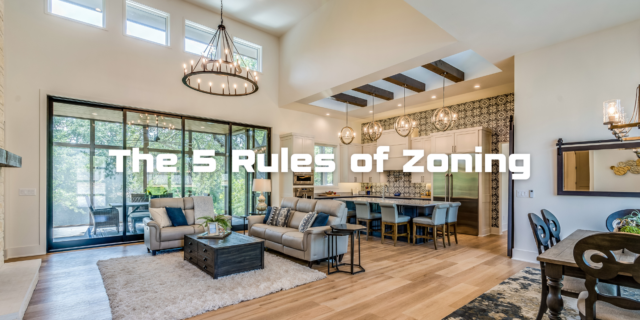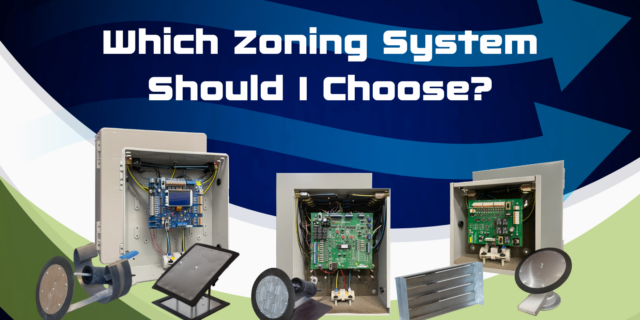How Zoning Systems Help Commercial Building Energy Consumption

Commercial building energy consumption is a significant concern for business owners and facility managers alike. As energy costs continue to rise, finding ways to reduce HVAC (Heating, Ventilation, and Air Conditioning) energy consumption becomes crucial not only for cost savings but also for environmental sustainability. One effective solution to tackle this challenge is the implementation of zoning systems within your commercial HVAC setup. In this article, we will explore how zoning systems can make a difference in reducing building energy consumption.
Understanding Commercial Building Energy Consumption
Before delving into the benefits of zoning systems, let’s first grasp the concept of commercial building energy consumption. This term encompasses the total amount of energy consumed by a commercial building, primarily driven by HVAC systems. HVAC systems are responsible for maintaining a comfortable indoor environment by controlling temperature, humidity, and air quality. However, these systems can be energy-intensive, leading to high utility bills and a significant environmental footprint.
The Role of Zoning Systems in Commercial Building Energy Consumption
Zoning systems are advanced HVAC solutions designed to optimize temperature control in commercial spaces efficiently. The core idea behind zoning is to divide a commercial building into distinct zones, each with its own thermostat. These zones can be rooms, floors, or specific areas, depending on the building’s layout and needs. Here’s how zoning systems can help reduce commercial building energy consumption:
1. Precise Temperature Control
One of the primary advantages of zoning systems is their ability to provide precise temperature control in different areas of a commercial building. Traditional HVAC setups often struggle to maintain uniform temperatures throughout a building, leading to overcooling or overheating in some areas. Zoning systems address this issue by allowing individual zone temperature adjustments. As a result, occupants can set the temperature to their comfort level, reducing the need for excessive heating or cooling.
2. Reduced Wasted Energy
Commercial building energy consumption often includes wasted energy resulting from heating or cooling areas that are not in use or are less frequently occupied. Zoning systems eliminate this inefficiency by only conditioning the zones that require it at a given time. For example, during non-business hours, areas like conference rooms, storage spaces, or empty offices can be set to lower energy modes or even turned off completely. This targeted approach significantly reduces building energy consumption.
3. Enhanced Energy Efficiency
Zoning systems incorporate smart technology and sensors to monitor temperature variations and occupancy in different zones. This intelligence enables the HVAC system to adapt and respond in real-time to changing conditions. When a zone is unoccupied or reaches the desired temperature, the system can automatically adjust its operation to conserve energy. By continuously optimizing HVAC performance, zoning systems contribute to long-term building energy consumption reduction.
4. Improved Comfort
In addition to energy savings, zoning systems enhance comfort for building occupants. Customizable temperature settings in various zones ensure that individuals are comfortable throughout the commercial space. This not only improves overall satisfaction but also boosts productivity among employees. A comfortable environment leads to better concentration and work performance, indirectly affecting building energy consumption by reducing the need for frequent adjustments.
Cost-Benefit Analysis of Zoning Systems
While the initial investment in zoning systems may seem significant, it’s essential to consider the long-term cost benefits. The reduction in commercial building energy consumption translates to lower utility bills, which can lead to a return on investment in a relatively short period. Moreover, zoning systems may qualify for energy efficiency incentives and rebates, further offsetting the initial costs.
The Importance of HVAC in Building Energy Consumption
In the realm of commercial building energy consumption, HVAC systems play a pivotal role. Implementing zoning systems is a proactive and effective approach to reduce building energy consumption. By providing precise temperature control, minimizing wasted energy, enhancing energy efficiency, and improving comfort, zoning systems not only lower utility costs but also contribute to a more sustainable future. For businesses and organizations looking to cut down on their operational expenses and environmental impact, investing in zoning systems is a smart choice that pays off in the long run. Embracing these advanced HVAC solutions can help pave the way towards a more energy-efficient and eco-friendly commercial building landscape.
How Arzel Can Help
Arzel Zoning has a solution for light commercial zoning called the AirBoss®. This flexible zone control system can handle between 2 and 8 zones. It’s perfect for larger residential properties and light commercial buildings. AirBoss is compatible with all Arzel dampers, so installers have the benefit of our wide range of damper options including custom dampers. Our damper prices are the best in the industry, and our quality can’t be beat either. Our test damper has cycled open and closed 20 million times without a hitch, so you can be sure they last. Get help with your light commercial zoning system design today.






